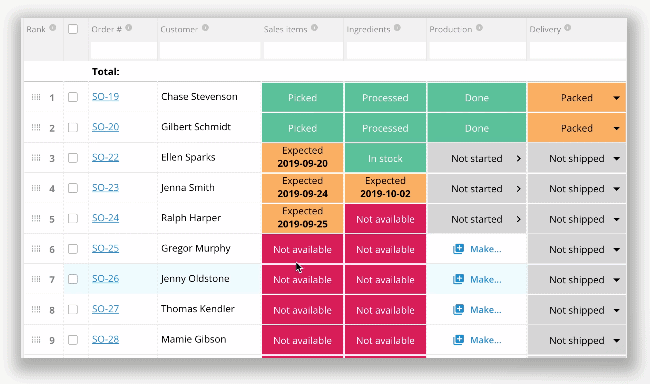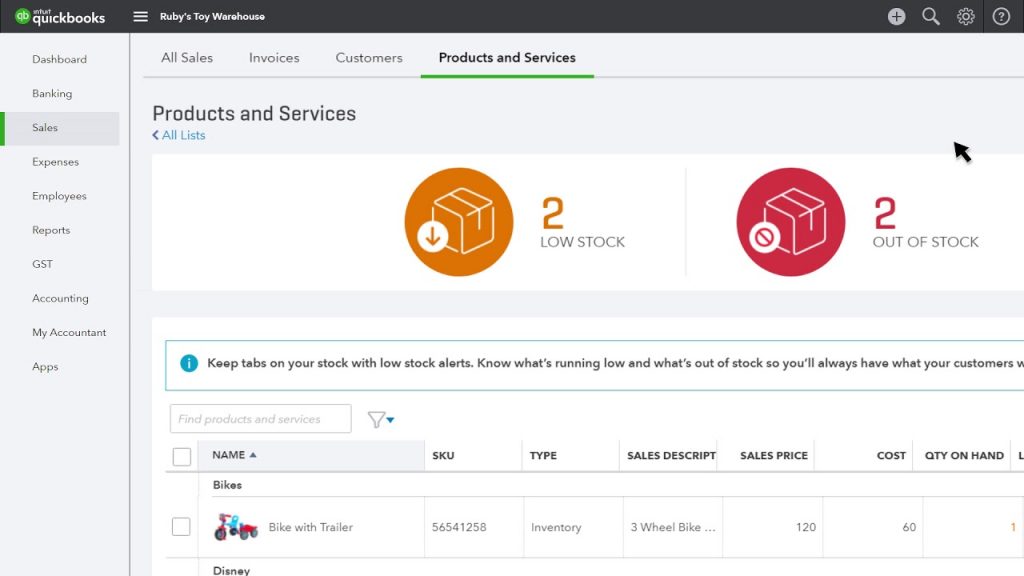The best warehouse in the world runs like an Amazon Fulfillment Center. Everything is automated and efficient. Although your business is not exactly Amazon’s size and scale, you can hack your way there by using an automated inventory management system. We’ll discuss the 3 best software tools for inventory management software for your warehouse operation.
What is inventory management software?
An inventory management system tracks the sale, purchase, and payments related to goods, raw materials, and finished products. Many inventory management software systems track inventory in different ways, such as:
- By barcode or serial numbers
- By radio-frequency identification (RFID)
- Through wireless tracking technology.
- Through your accounting software since each purchase requires a product to leave your warehouse or facility.
What’s the difference between inventory tracking and inventory management software?
The short answer is there is no difference between the two. Inventory tracking and inventory management are one in the same. You can do one without doing the other or you’ll run into trouble.
Do small businesses have to keep inventory?
Absolutely! If you don’t track your inventory then you’ll wind up giving your customers a bad experience. You won’t know if you have the supplies needed to make their product in order to ship it out after they’ve paid. This results in delayed shipments – or even worse – chargebacks. In addition to keeping a pulse on your inventory levels, you’ll enjoy a more efficient operation and a better idea of your taxes when it comes to using the accrual method to properly account for your inventory come tax time.
How to choose the best inventory management software?
In our opinion, the number one criteria for any inventory management software tool is to ask yourself, “What other systems in my business can this tool integrate with?”
That’s the number one key point in any tool, especially software that’s as critical as inventory management for your warehouse. IM software is just as important as a CRM or your HR systems. If one things goes wrong in inventory, you’re suddenly out of parts and that produces a negative customer experience.
The second criteria we look at is ease-of-use. Although that’s subjective, there is still a baseline standard to adhere. What good is a inventory management software tool if it is impossible to use such as NetSuite or Zoho Inventory?
The last piece of criteria is price. As a business owner you are naturally price sensitive. Your biggest cost aside from inventory and payroll is likely going to be software subscription services. Adding another monthly payment is always a tough hurdle to jump. Sometimes the right tool for the job makes all the difference! We wanted to keep the software cost down to below $100/mo for the first tier of features.
So to recap on how to choose the best inventory management software:
- Integrations: Does this inventory management system integrate with other tools my business is using?
- User friendly: Can I train anyone at my company to use this tool? Do I need an expert anytime I want to make changes?
- Price: Is the juice worth the squeeze? Will this tool cost us more than just doing things the way we are currently?
The 3 Best Inventory Management Software Tools for Automation
DEAR Systems
Don’t let technology systems limit your warehouse’s growth potential. With DEAR Systems, you can connect all your sales channels, manage your supply chain, and scale your operation all in one tool.
DEAR has a complete library of APIs and integrations with leading business software tools such as Zapier, Integromat, QuickBooks, Xero, Shopify, WooCommerce, ShipStation and many more.
With just those integrations alone, you can see how you can easily get all parts of your business to make one seamless workflow. For example, you can easily create an invoice after a sale on Shopify through QuickBooks, which creates an order in DEAR Systems to be picked and then processed by ShipStation to be scheduled for pickup by your UPS driver. Your accountant and warehouse manager will thank you!
Another cool feature of DEAR is that they have a supply chain management feature. You can plug directly into your supplier’s portal to instantly check their inventory levels, pricing, and lead times. This makes it so you can make sure you are ordering parts at a healthy profit margin! They really have your back.

Although DEAR is our favorite tool, it comes with a rather large price tag. It may not be right your company’s budget.
At $249/mo (or $2,739 annually) it’s actually a great deal because of all the integrations, automations, and ease of use layout/design.
We highly recommend DEAR systems from all of the inventory management software tools we’ve researched. This includes those that obviously didn’t make this list such as Zoho Inventory.
Katana MRP
If you are a direct to consumer based company using Shopify as your ecommerce front end, then Katana may be the right inventory management solution for you.
Katana also has a robust suite of API functionality which in simple terms means that whatever you can do in Katana’s interface, you can do it systematically with computer code using their API. This is how automated workflows get built!
For example, with Katana’s inventory management software, you can take your eCommerce order from Shopify, WooCommerce or other similar tools and pipe the order information directly into Katana. From there, Katana will automatically create the order, assemblies, parts, etc. for your warehouse team to fulfill, box, and ship. Once the order is processed, it can automatically communicate with your QuickBooks Online or Xero accounting systems.
In addition to that, Katana also integrates with automation tools like Zapier or Integromat which allow you to connect it to thousands of other business tools you might already be using.

Katana pricing is friendlier on the wallet starting at just $99/mo for the Essentials Plan. However there are some drawbacks such as you can only have 1 user. That could be a deal breaker for a larger organization that would have 3-5 users of its inventory management software.
The next tier up in pricing is at $349/mo for the PRO Plan, which still only offers 1 user per account and $39 for each additional user. That can be a painful barrier to entry especially if you need to manage multiple warehouses or use batch/lot tracking or if your inventory has expiration dates.
QuickBooks Inventory
This is the tool that most people start with. If this is your first venture into using an inventory management software system, and you’re already using QuickBooks as your accounting software of choice, then this is a no-brainer!
The basic and easy to use nature of nature of QuickBooks translates the same for their inventory management tool. QB Online also integrates nicely with your eCommerce front-end such as Shopify or WooCommerce. In addition, they have tons of integrations with other tools like Zapier and Integromat.
The way it works is simple, every time a customer purchases something from your website’s shopping cart/checkout, an invoice and order are created in QuickBooks. From there, you’ll configure your inventory management tool in QuickBooks to reduce your inventory size. You can then set up reordering thresholds to receive alerts when your stock is low.
The drawbacks of QuickBooks Inventory is they don’t handle “assemblies.” That’s where one whole product is actually composed of smaller pieces that need to be assembled. They also don’t automatically reorder your parts/pieces and they don’t have an easy way to manage the whole supply chain or vendor management tools. You’ll need all of those once your operation has scaled.

In order to take advantage of the QuickBooks inventory feature, you’ll need to at least be on the $35/mo “PRO” plan or the $75/mo “Advanced” plans.
Again, QuickBooks Inventory tool is just a way to get your feet wet when you are starting your journey into creating an efficient warehouse team. The features aren’t that amazing but it’s enough to get the job done for most businesses that just starting out. Sometimes it is best to not pay for features you don’t know need yet. In this case, $35/mo is a low risk way to evaluate the process and grow into it. You can still do a lot of automation inside QuickBooks with things like Zapier and Integromat to reach other parts of your business.
Which Inventory Management Software is Right for My Business?
Here is a simple comparison chart we’ve put together to make the choice easy for you.

Need help automating your business?
Find one of Workload’s freelance experts to help make the most of your software tools. Integrate and automate all your software tools into one seamless workflow.

